Early Detection of Dog Health Symptoms
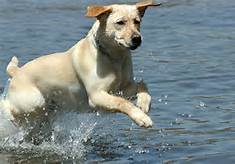
In this article will cover some of the most common dog health symptoms that will help pet parents to detect certain kinds of health problems as their dog begins to age. Just like humans, as we age we can show signs of certain illnesses, so do dogs. All you need to do is to be on the alert and observant to your pet’s behavior because they will show signs that something is wrong. Early detection of these symptoms will extend the life of your pet.
When you begin to see that something is wrong, you can take some corrective action to prevent a more serious condition later.
The best thing that you can do for your dog is provide him with exercise every day and dog food that is healthy. This alone will improve his overall health and keep him in shape and help his weight under control. The most common health problem in dogs is gaining too much weight or being obese. You must control obesity as this is dangerous for dogs that can lead to health issues later.
Ten Most Common Health Problems Video
You can watch the video below with the ten most common health problems with dogs.
Ten Most Common Dog Health Problems – Video
The topics that will be covered are below:
- Watery eyes
- What is a dogs dewclaw
- Dogs nose
- How to I take my dogs temperature
- Staying cool in the summer
- Becoming hard of hearing
- Obesity In Dogs
- Conclusion
Watery Eyes
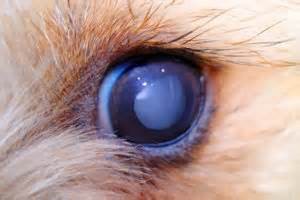
Glaucoma is a disease that many dog owners notice when it’s too late. It’s caused by a buildup of fluid in the eye, and is one of the most common causes of canine blindness. In fact, glaucoma strikes about one out of every 200 dogs. Some breeds are more disposed to it than others. High-risk breeds include cocker spaniels, terriers, basset hounds, and beagles.
The symptoms of glaucoma are hard to spot, but early diagnosis is critical to preventing blindness. Signs of the disease include glassiness, cloudiness, or redness in a dog’s eyes. Other symptoms include excessive tearing, sensitivity to light, or a dilated pupil. If you notice any of these problems, have him checked out by a veterinarian immediately.
Back To Top
What Is a Dog’s Dewclaw?
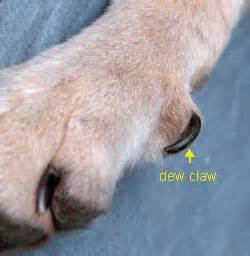
Those curious toenails on your dog’s upper leg are called dewclaws. They grow on the inside of a dog’s front legs and sometimes on the hind legs. Early in canine evolution, dewclaws likely helped your dog’s grip their prey and to gain traction when running. They can still serve these purposes today, even though they are considered vestigial toes.
Some dog owners may decide to have their pet’s dewclaws removed to prevent potential injuries caused by snagging. Often this is done when the pooch is a pup and the dewclaw is soft and pliable. But if your dog still has his dewclaws, don’t fret – they rarely cause problems, and will likely be nothing more than a mysterious legacy of your best friend’s wild past.
Back To Top
Dogs Nose
A dog may be a man’s best friend, but the nose is a dog’s best buddy. Your dog’s nose is two million times more sensitive than yours. In fact, your pup’s sense of smell is his most important sense, so helping to him keep his nose healthy is important. But don’t worry if that nose is wet or dry.
Most of the time, a dog’s nose is cool and moist because his tear ducts drain into his nose. But if your pup’s nose is dry, don’t worry, it’s doesn’t usually mean that he is sick. In fact, an animal’s appetite and behavior is a better indicator of his overall health.
However, if your dog does have a runny nose or a nasal discharge, consult your veterinarian, as it could be a sign or an allergy or illness.
Back To Top
How Do I Take My Dog’s Temperature
Occasionally, you may need to take your dog’s temperature, especially if your pet is ill. To do this, you’ll need a rectal thermometer like one used for babies’, petroleum jelly and a paper towel.
Follow these easy steps below in taking your dog’s temperature:
- Start by shaking the thermometer until the mercury reads below the ninety-five degree mark.
- Lubricate the thermometer with petroleum jelly.
- With one hand, raise your pet’s tail at the base and hold it up firmly so the animal cannot sit down.
- Then, with a twisting motion, gently insert the thermometer into your pet’s anus.
- Hold it there for between one and two minutes, then remove it; wipe it down quickly; and take a reading.
An adult dog’s temperature should read be between 101 – 102.5 degrees. Contact your veterinarian if your dog’s temperature should be above the normal high reading.
Back To Top
How Does My Dog Stay Cool In Summer?
When it’s hot outside your dog is in his fur coat and he can’t sweat to keep from overheating. So, when your dog’s body temperature starts to rise, he pants and drools to keep himself cool. The panting action forces air through his nasal cavity and over his wet tongue. As the air circulates, moisture evaporates, taking some of the dog’s body heat with it.
When your dog exercises in the hot weather, he may pant for what seems like a long time. A half hour or longer is not unusual, but keep a close eye on your dog to make sure he is not in any distress. Symptoms of heatstroke include accelerated or abnormal breathing and heart rate, a dry mouth, and heavy drooling. If you notice any of these signs, call your veterinarian.
Back To Top
My Dog Has Become Hard of Hearing
Dogs experience many life changes as they become elderly. You may observe that they will begin to move more slowly, grow gray hair around their face, and lose their sense of hearing. You can’t prevent age-related hearing loss, but you can help your dog adjust to it if you should observe it.
You’ll know that your older dog is losing his hearing when he fails to notice soft noises, or is not startled when you approach him from behind. As he becomes hearing impaired, it’s important to protect him from hazards he can’t hear. For example, don’t allow him to cross the street off his leash, as he may not hear approaching cars.
Always use a leash when he is going outside as he may not hear you when you call him. As you observe these behaviors you can help your pet enjoy his later years with some comfort.
Back To Top
Obesity In Dogs
One of the most serious and most common health problems in dogs is being overweight. This happens to be the number two health problem in dogs with dental hygiene as the number one problem. You can cut short his life span by two years if he is obese. As a pet parent, you can control his feeding and exercise sessions. You can view a short video about obesity in dogs that is detrimental to their health and needs to be corrected immediately. If your dog is greatly overweight, you may have to work with your veterinarian to schedule a new feeding and exercise sessions for your pet.
To determine if your dog is obese, a dog is considered obese if he weights 20% or more above the ideal body weight. Some dog breeds that are predisposed to obesity are: Golden Retrievers, Labrador Retrievers, Dachshunds, Shelties, Basset Hounds, Beagles, Cocker Spaniels, and Cairn Terriers.
As a dog ages, their metabolism slows down and their food needs change.
Watch this brief video on some tips to help your dog lose weight.
However, if you should observe that your pet is gaining weight you can take some corrective measures before it becomes serious. Below are some tips:
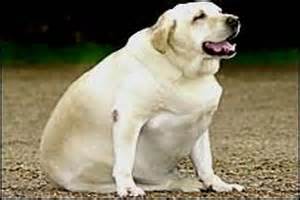
- Begin by taking his weight. Write down this reading on a piece of paper.
- Determine his normal weight for his age by asking your vet.
- Next, reduce his dog food intake by 1/5. Do this for one week.
- Do not feed him treats during the day except for his training sessions. Try to keep these at a minimum.
- Do take him out for more exercise during the day. Be sure that he runs a little during his exercise sessions. Try to increase the length of the runs when possible. Be sure to look for fatigue in your dog during this process.
- After one week, take his weight again and record it on the piece of paper. If you see it going down, continue for another week. If the weight is the same, reduce his food by a little. If going up, reduce his food by another 1/5. Keep on doing this until the desired weight has been reached. After each week, record his weight and compare readings. Make adjustments as necessary.
- Once the desired weight has been reached, feed him normally to determine if he will maintain the weight.
- Continue to have his exercise sessions.
- After one week, take his weight reading again. Make any adjustments by giving him more or less food and exercise. Be sure to record his weight after each week. Do this up to one month after he has reached the desired weight to ensure there’s no weight gain or loss.
- You also want to consider in feeding your dog smaller portions five times a day instead of one or two larger meals.
- You do not want for your dog to lose weight too quickly as this may have a negative effect on his health.
If following the above does not work for your pet, then you will have to do more drastic measures by reducing his food by 1/3 to 1/2. Take his weight readings after every week and record them to determine if he is losing or gaining any weight.
Another action you might have to take is to contact your vet to determine if no other health related issues is the cause of the weight gain or failure to lose weight.
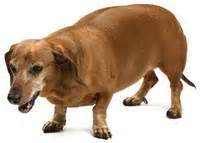
Monitor his progress as you like for him to lose between 1 and 2 percent of his body weight each week. If he loses more then 1 to 2%, then increase his food by a little. If you should see no results after two weeks, contact your vet. He/she should be able to provide you with a schedule for reducing your pet’s weight. Otherwise, he might have some other medical condition that is causing him from losing weight.
One final note: Be sure you inform all of the family members so they will not feed him any treats. You should be in total control of your dog’s weight loss program which includes feeding him any treats. If you do feed your dog treats, be sure that they are healthy ones and are no more than 10% of his total daily intake of calories.
Back To Top
Conclusion
Hopefully this information on common dog health symptoms was helpful to you and will give you some heads up on what to do if your pet should experience any of these symptoms mentioned above. All pet owners should be proactive when it comes to these symptoms and the information provided here has done just that.
Here are some other related articles that you may want to read about for dogs: Most Common Parasites In Dogs, Ingredients To Avoid In Pet Food, Do It Yourself Dog Grooming Tips.
It’s our aim to help keep dog owners informed of the care they should be giving to their pets with these articles.
As an Amazon associate, I earn from qualified purchases.
Dog Owner’s Home Veterinary Handbook
The First Aid Companion for Dogs & Cats (Prevention Pets)
Go back to Dog.Dog Luxury Beds home page.


